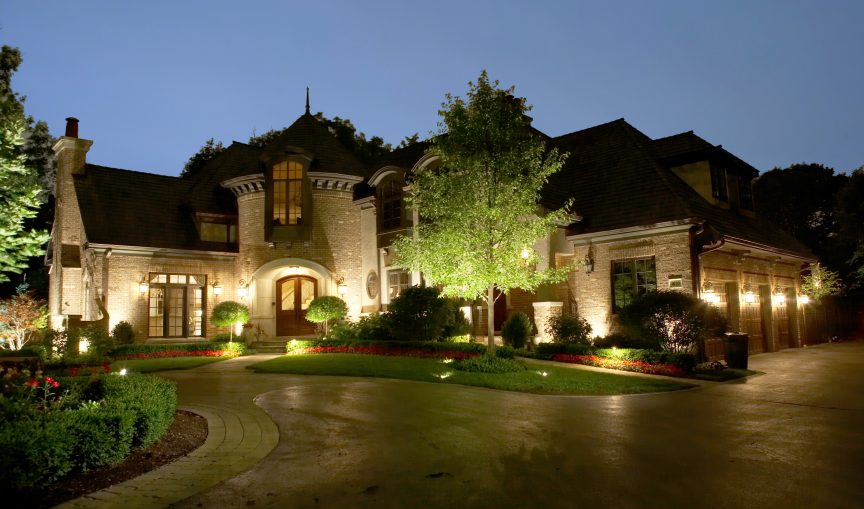What makes professional landscape lighting stand out from amateur efforts?
Certainly using the right product makes a difference. Professional quality components are better constructed, aim light more effectively and stand up tough landscape conditions.
Equally important is the design and layout of the system. There’s a real difference in professionally-designed installations. Professional designers select each fixture type, output and placement carefully to create lighting portraits.
We asked some top landscape lighting experts what design mistakes they’ve observed that should be avoided in a professional design. Here’s their “top 5”:
1. Using too many fixtures along a sidewalk. Designers cautioned to avoid the airport runway look. Place fixtures approximately 10 feet apart, staggered on each side of the path. Create pools of light rather than lighting the entire path
2. Using the wrong beam spread. The taller the landscape feature, the narrower you’ll want the beam For a tall and thin tree or column, a 10 degree fixture is ideal; for a shorter, wider object, choose a 35 or 60 degree. The wide selection of interchangeable LED lamps makes this easier.
3. Over-lighting immature plants. Too many fixtures on small plants creates hot spots in the landscape. It’s better to use a fixture that’s right for the tree today, and change it out as the tree grows. Consider a lower lumens lamp to start, then increasing lumens later.
4. Using only one type of fixture. Homeowners rely on professional landscape lighters to bring their property to life. For some clients, just lighting paths may not meet expectations. Using a combination of fixtures allows the contractor to dazzle with advanced effects like shadowing, moonlighting and grazing.
5. Not listening to homeowners. Get to know homeowners’ wants and needs; otherwise you can face a costly redo when expectations and results don’t match up. Ask questions about how they use outdoor spaces and their needs around beauty, safety and security.

